I pick at my nails when I’m uncomfortable. My boyfriend blinks a lot when he’s trying to calm me down. My dog licks his lips when he’s nervous.
We all have our own calming signals.
These signals are part of our body language.
Some are predictable across species, while others can be characteristic of an individual. They help us communicate to others that we’re uncomfortable. They also can be used to calm ourselves down, as a coping mechanism.
What’s A Dog Calming Signal?
A calming signal in dogs is a way for a dog to communicate that he’s uncomfortable.
It’s a bit confusing because calming signals have dual purposes – they are indicators of stress, but are also often used to calm the stressed individual down.
Why Do Dogs Use Calming Signals?
Dogs use calming signals to say:
I’m not a threat, please don’t hurt me.
I’m stressed out, let’s go.
That was scary.
I’d like this situation to change.
I’m trying to calm myself down here.
Some signals are meant to clearly communicate meaning. Other signals may be more self-serving, a stress release. Many are both!
Humans use calming signals, too. Some of them even overlap with dog calming signals.

Examples of human calming signals include:
- Lip licking or chewing
- Looking away
- Picking at nails or hair
- Fiddling with objects
- Stretching
- Pacing
- Scratching
Some of these human behaviors also look like boredom. This might be because acting bored or disinterested can help you feel less stressed.
Fake it ‘till you make it, right? The same goes for dogs, as you’ll see below.
Recognizing Dog Calming Signals + How to Respond
As a dog owner, it’s important to know and recognize calming signals in your dog as well as others.
Recognizing a calming signal is the best way to help de-escalate a situation for your dog before he becomes even more uncomfortable.
In my job as a shelter animal behavior technician, I use calming signals to keep myself safe.
A dog that’s showing me a ton of calming signals is very uncomfortable and probably is closer to being pushed over the edge and biting.
If I see calming signals, I need to back off and try something new.
At home with my own border collie, I use calming signals to help change his opinion about situations here’s nervous about.
My dog Barley shows a lot of calming signals around fast bikes, so I started to train him that bikes equal treats. I helped him learn that bikes are good and his fear around bikes has greatly reduced.
Are Calming Signals Bad?
Calming signals aren’t always a bad thing, and don’t always indicate an issue. They’re a way for dogs to communicate.
Many dogs will use calming signals during rough play with other dogs.
Good playmates will use calming signals to ensure that play stays fun. The calming signals help reaffirm between playmates that “this is all in good fun.”
Next time you’re at the dog park, keep an eye out for dogs using calming signals, and watch to see how other dogs respond. Socially savvy dogs will also use calming signals to make other dogs feel more comfortable by mirroring their calming signals.
In short, calming signals are an incredibly useful thing for you to be familiar with as an owner.
Your dog can’t tell you that he’s nervous with words, so you need to pay attention to his body!
It’s far easier to learn dog body language than it is to teach your dog English (although determined owners can sometimes teach their dogs to say “I love you”).
Dog Calming Signals 101: What to Look For
Now that we know that calming signals are important, so let’s explore some examples of dog calming signals.
It’s important to note that most of these behaviors can be seen at other times too, when they’re not being used as calming signals.
It’s key to pay attention to these behaviors in context.
For example, I’m not worried if my border collie is lip-licking a lot after I feed him peanut butter. But if he lip licks every time he sees a guy carrying an umbrella, I know we need to work on desensitizing him to umbrellas!
Dogs will show a variety of these behaviors, and not every individual will show the full repertoire. Some dogs may have their own calming signals that aren’t listed here.
Get to know your dog’s go-to behaviors so that you can just watch for those!
Lip licking. This is my border collie’s go-to for calming signals. It may just be a little tongue flick, or it can be a full-fledged mouth wipe.
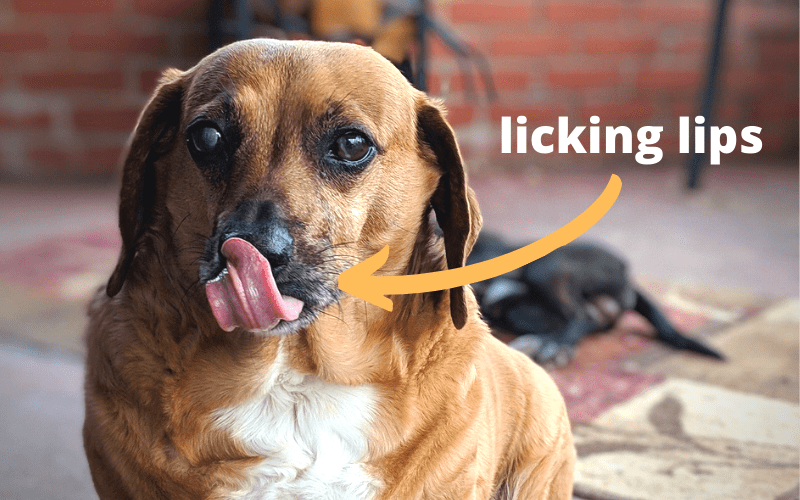
Facial expressions. This one can be hard to catch. Some dogs furrow their brow. Many dogs will have a ‘tense’ face. This just means that the muscles in their face are tense, rather than relaxed. It can take a trained eye to see!

Ear position. Many dogs will pin their ears backwards when they’re stressed. Get to know where your dog’s ears sit when they’re relaxed (it can vary depending on your dog’s breed and specific type of ear shape). Once you know his ‘normal,’ you’ll be better able to notice when it’s abnormal.
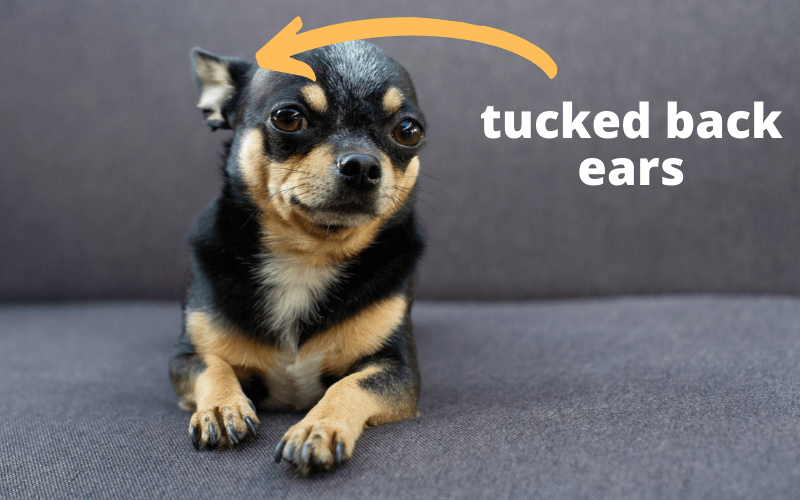
Yawing. Many dogs yawn when they’re uncomfortable. If it’s not nap time, pay attention to those “stress yawns!”

Paw raise. I see this one a lot in tiny dogs. Some dogs just lift their paw a little off the ground, others will pull their front paw all the way to their chest.

Whale eye. Normally, we can’t see the white of our dog’s eyes. If you see the whites of your dog’s eyes, she’s probably uncomfortable. Dog trainers call this whale eye or moon eye.
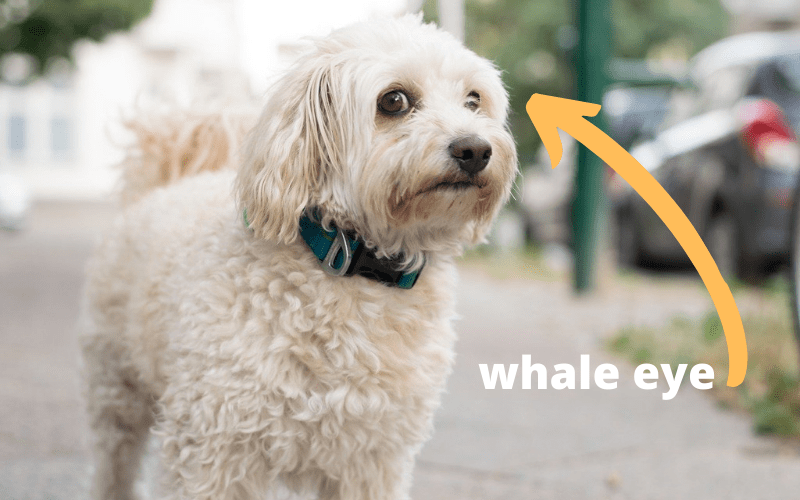
Shake off. Dogs often shake off after petting or during rough play. This stress release probably helps them loosen up a bit. If your dog is always shaking off after you pet him, he probably doesn’t like the way you’re petting him!
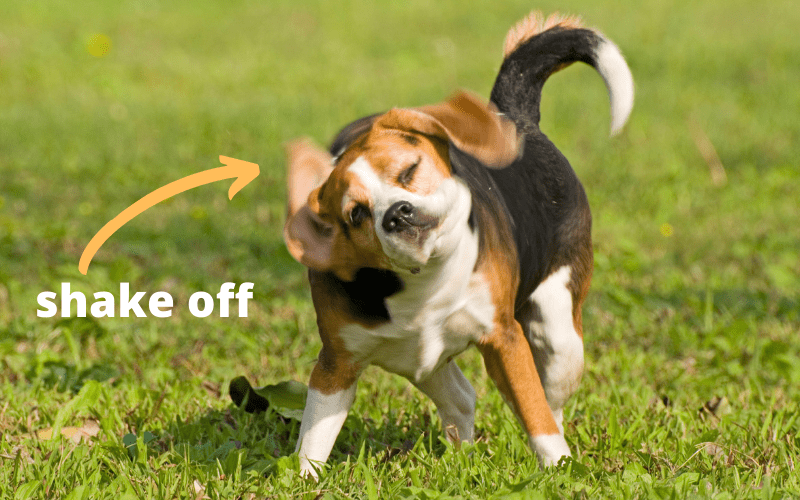
Dandruff. This one isn’t a good sign. Dogs that are really stressed will start showing dandruff on their bodies out of nowhere. This often will show up around the chest or shoulders, particularly if the dog is wearing a harness. Dog dandruff shampoos can help for skin-based issues, but random, unexplained dandruff can be a stress signal.
Sweaty paws. Sweaty paws are also a pretty bad sign. Either your dog is way too hot, or she’s very stressed out! You’ll be able to see sweaty paw print marks where your dog was standing or walking.

Looking away. In doggie language, it’s polite to avert eye contact. Direct staring is usually a threat! Dogs will look away to be polite or to de-escalate situations.

My border collie often barks at the door, then promptly looks away from me, staring at the ground. It’s his way of saying, “please don’t hurt me.” I guess his last owners weren’t fond of his barking.
Scratching. Dogs that are playing and suddenly scratch intensely around their neck probably are showing a calming signal. They’re de-escalating a situation, not actually fixing an itch. Scratching is often paired with a shake-off afterwards.
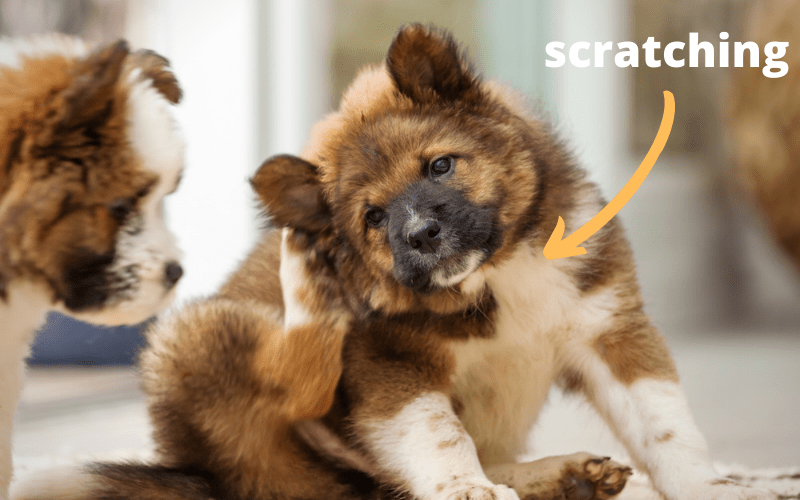
Tail position. This one can be nice and clear. A dog with a tucked tail is not a comfortable dog.

It’s important to note, however, that different breeds will look different with a tucked tail.
A dog whose tail is normally arched high over its back like a pug or akita will look very different from a dog whose tail normally sits low, like a chihuahua or a hound. A pug’s tail probably won’t ever go all the way between its legs, no matter how scared the dog is!
Panting. Dogs pant when it’s hot, but did you know they also pant when they’re stressed? If your dog isn’t hot or exercising, pay attention to the panting!
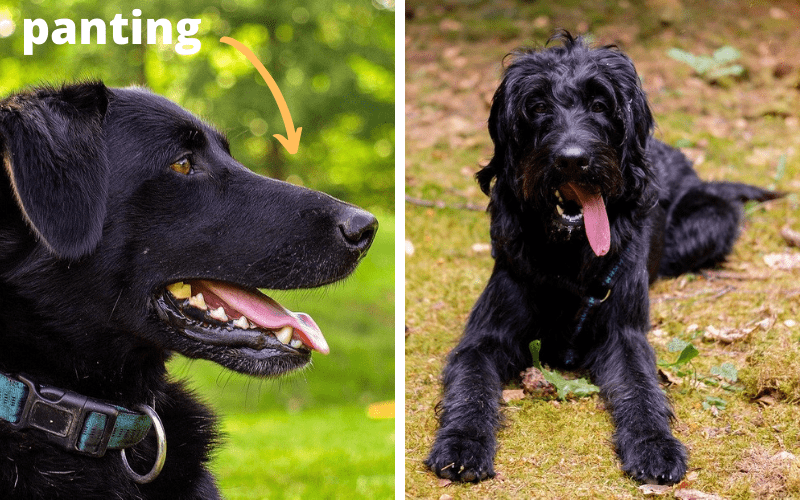
When we first brought Barley home from the shelter, I don’t think he stopped panting for 48 hours. He was just too stressed!
The tongue positioning can also help identify stressed panting vs heat panting. Usually a loose, floppy side tongue is more due to heat than anxiety, while a panting dog with a stiffer, more drawn-back tongue is more likely to be stress-related.
Low body postures. Dogs crouch when they’re scared. They might also arch their back or just lower their head – they’re trying to be smaller and less threatening.
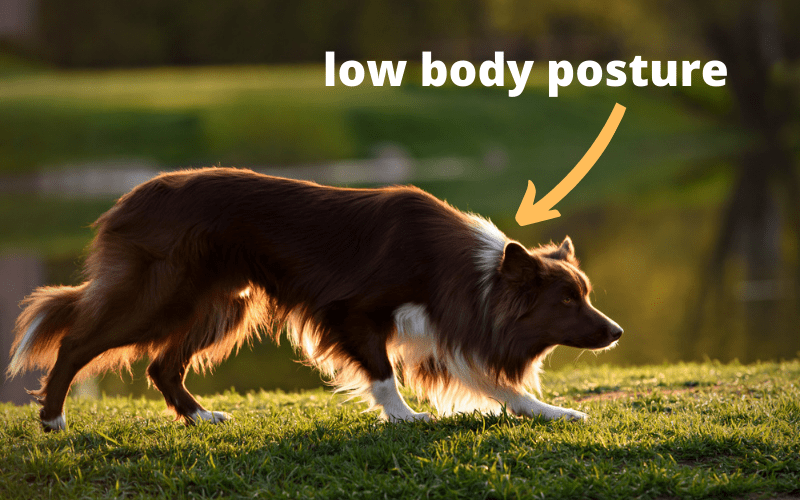
Sniffing. Yes, sniffing can be a calming signal! Some dogs look away from the scary thing and then become very interested in a smell on the ground.
This can help calm them down and also shows they’re not a threat. Context is key to identifying this one!
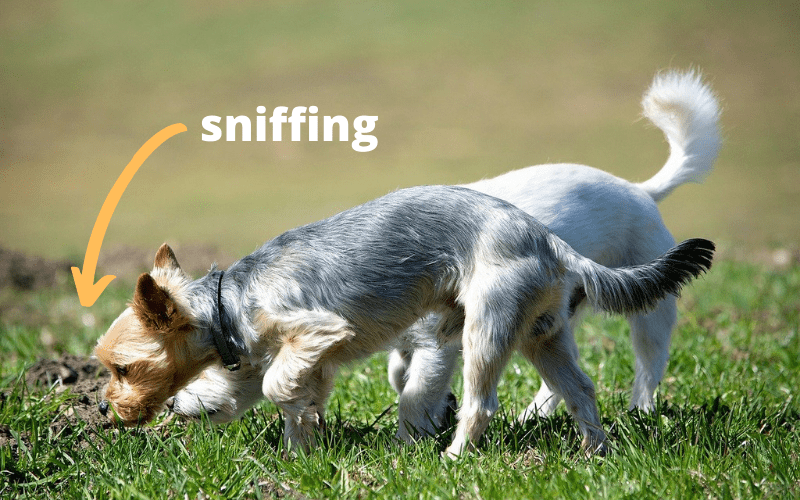
What Should I Do When I See a Dog Calming Signal?
Remember that your dog isn’t being “guilty” if you see these calming signals after you scold her.
There’s a hefty collection of YouTube videos showing guilty-looking dogs after a dive into the kitchen trash can, but really the dogs are simply using their calming signals to de-escalate the situation, since they can tell you’re upset with them.
Barley shows calming signals when I interrupt him from digging in the yard. It’s not because he’s “sorry.” He just doesn’t want to get in trouble, so he’s showing he’s not a threat. Scientists don’t think that dogs are capable of feeling guilt.
That said, calming signals are not to be ignored. If your dog shows calming signals surrounding a certain situation, like the vet, you’ve got a job to do! You can work on counter-conditioning and desensitization in order to help make your dog feel more comfortable and ease your dog’s anxiety around vet visits.
If you can leave the situation, do so. Ignoring your dog’s calming signals and forcing them to “just deal with it” will erode their trust in you and make their fear worse. Listen to your dog’s calming signals and do what you can to make them more comfortable by giving them treats, bringing along a toy, or creating distance between them and the scary thing.
Never, ever punish a calming signal. Your dog is telling the world, in his own subtle way, that he’s uncomfortable. If you punish him for being polite about it, he might resort to being rude next time.
Comply with your dog’s calming signals so that you don’t force him to escalate next time. Dogs that feel they have no other option will bite in order to keep the scary thing away!
Remember that socially savvy dogs using calming signals in the context of play are doing a great job and should be praised. At my job, I often praise fearful dogs when they show a shake-off. They’re a coping mechanism in some cases, so it’s good to see them!
What’s your dog’s signature calming signal? What makes them nervous? Tell us in the comments!




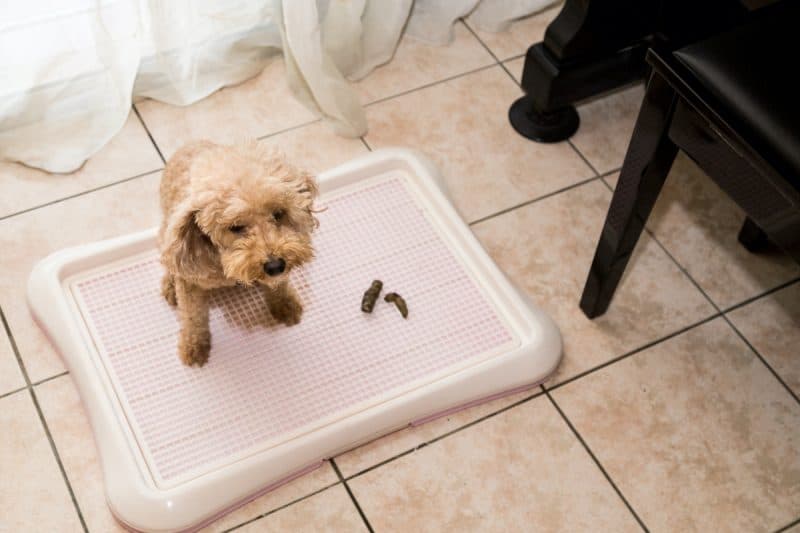
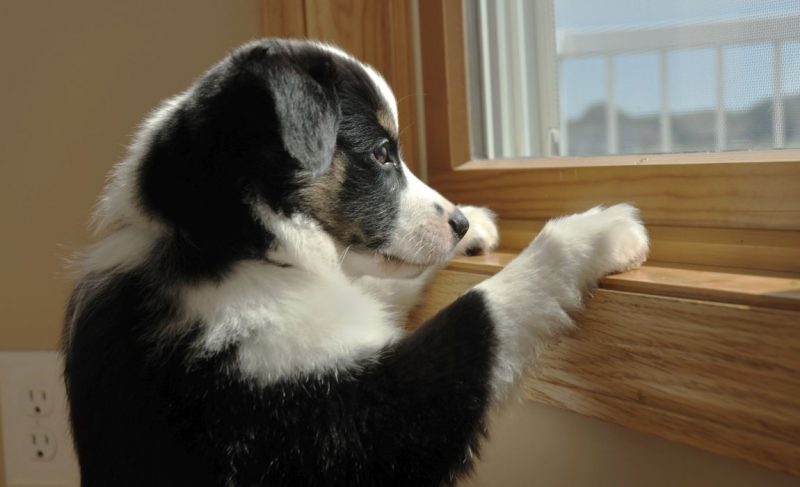
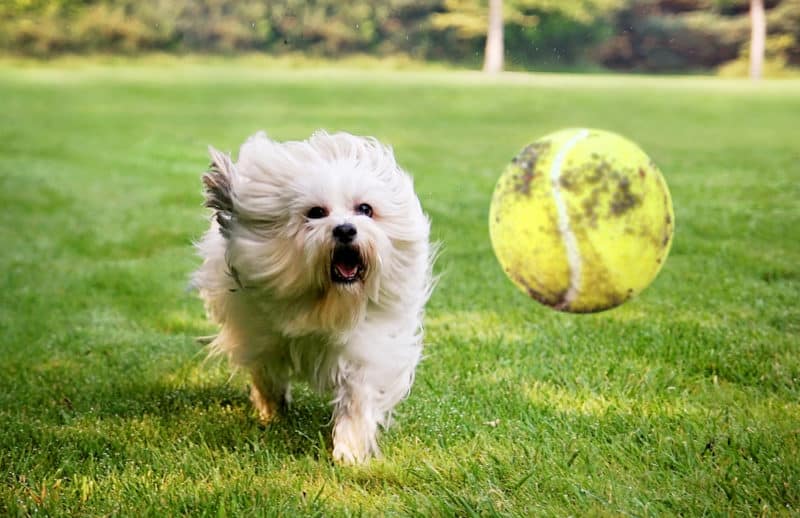

Leave a Comment